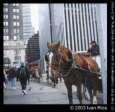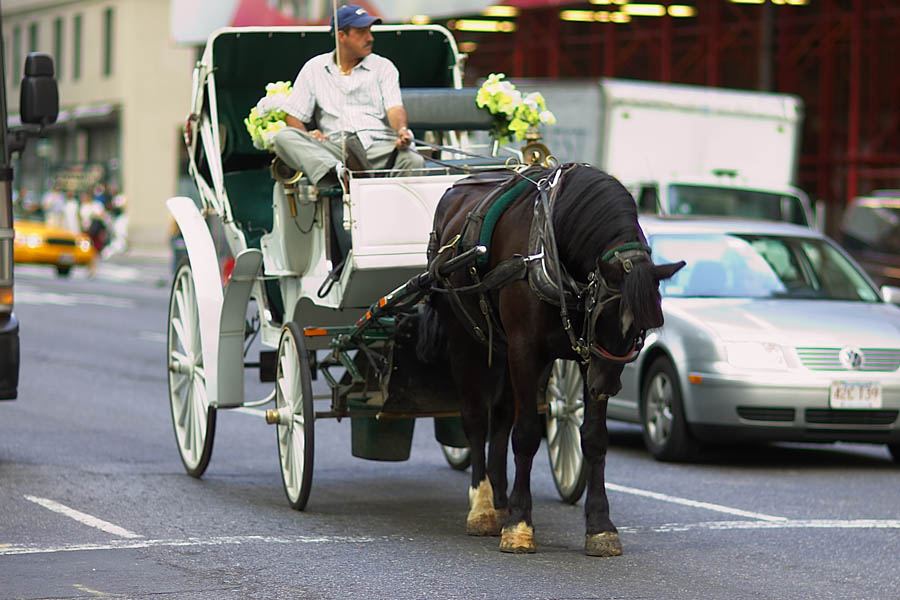Monday, February 06, 2006
Horse Welfare, continued

Heat stroke, dehydration...
7.
Even if largely restricted to pedestrianised areas, the horses are still being exposed to the life-threatening risks of heat stroke and colic (a major cause of death in adult horses). David Freeman, a specialist equine vet at the University of Oklahoma, has warned that periods of intense exercise followed by periods when the horse is simply standing around, plus a limit on the horse's access to small and infrequent amounts of water, increase the risks of heat stroke and colic.
8.
During these summer months, horses suffering from dehydration or heat stress can die in just a few hours. Symptoms of heat prostration in horses include flared nostrils, brick-red mucus membranes, trembling, and a lack of sweat production on a hot day. Some U.S. regulations forbid horse-drawn vehicles when the temperature reaches a certain degree. A problem associated with such edicts is that official weather bureau readings do not accurately reflect the temperature on city streets. A study published by Cornell University found that the air temperature recorded by the weather bureau can be nearly 50 degrees Fahrenheit cooler than the actual asphalt temperature. And the New York City Department of Transportation found that asphalt surfaces can reach 200 degrees Fahrenheit. These discrepancies can be life threatening particularly for a large horse, like one of the draft breeds, as they are greatly challenged in their ability to dissipate body heat into an increasingly warm environment. The horse can lose 8-10 gallons of fluid with exercise, but if the air is damp, cooling by evaporation cannot occur. If dehydrated and unable to produce sweat, anhydrosis ensues and can kill.
9.
The stop/go work pattern for horses is also likely to bring an increased risk of the highly dangerous condition equine myoglobinuria, or azoturia. Dr Tim O'Brien, a leading advisor to animal welfare organisations such as Compassion in World Farming, comments: 'This presents itself when horses are worked, suddenly rested, then abruptly returned to work. It appears to be caused by the sudden liberation of large amounts of accumulated lactic acid when the animal is returned to work. The horse's limbs become stiff. The hindquarter muscles are so rigid that they can feel like wood. Urine is sometimes retained, the bladder having to be relieved by the introduction of a catheter. Once the condition has developed, the horse is in severe danger.'
10.
Of equine myoglobinuria, Black's Veterinary Dictionary emphasises: 'If the horse is walked for any distance, a fatal outcome is likely'.
from Animal Aid http://www.animalaid.org.uk/campaign/sport/omnibus.htm
